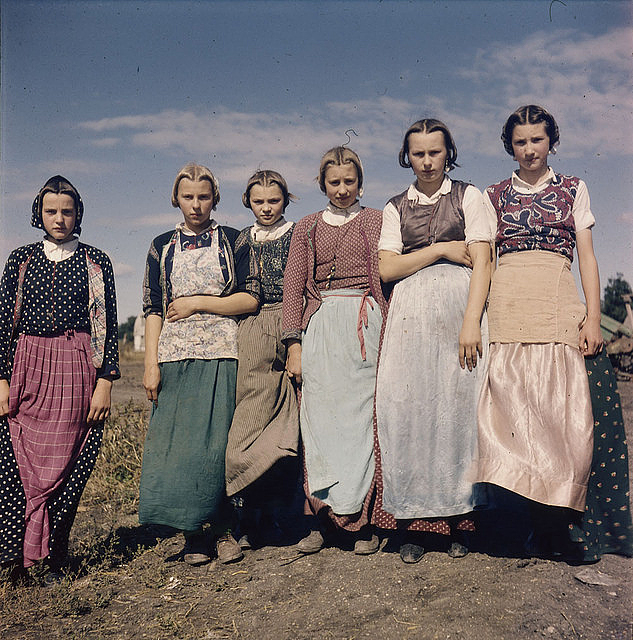For one week every year, women in the Acadia Hutterite Colony, located about 5 miles northeast of the town of Carberry in southwestern Manitoba, host a quilting event for charity. The ladies hold their quilting bee in the school gym on the colony grounds. According to a recent newspaper account, the women completed 800 quilts this year, their highest number yet. Aided by members from three or four neighboring colonies each day, the women layer the quilt tops, install batting and backing, and do the quilting with their sewing machines.

One day in early February, members of a quilting club in the town of Virden, located near the border with Saskatchewan, drove 75 miles across the Canadian prairie to visit Acadia. The “Crazy Stitchers” as they call themselves were overwhelmed by the scene when they entered the colony that February morning. “We were in awe of what we saw when entering the gym and seeing all the ladies working on so many quilts,” said Betty Bender, the President of the Virden group. Huge numbers of quilts were piled everywhere.
The Hutterite women from the Acadia Colony begin after Christmas making the quilt tops from pieces of fabric they have on hand. Ladies from the other cooperating colonies also donate quilt tops they have made. They purchase the batting and the backing. Then, during the quilting week, they all work together, sharing ideas about quilting and other news. Marian Waldner from Acadia explained that they get together with many sewing machines to do the quilting—as well as to socialize. While they used to spend the first several days of the week sewing the quilt tops, they then decided to sew them in advance so they could devote the week exclusively to the quilting.

Hutterite females who are too elderly, or too young, to handle the sewing machines help with support work such as removing pins when the quilts are finished. The completed quilts are then donated to charitable organizations and the needy in Ontario and Manitoba. Ms. Bender, the visitor that day from Virden, remarked that her group, the Crazy Stitchers, had had a wonderful day at Acadia. The Hutterite women did some singing while they worked, she said.
Janzen and Stanton’s 2010 book The Hutterites in North America made the point that quilting is just one of many work projects that colony women get involved with. They argued that Hutterite men and women like to work on group projects as much as they can. They are raised from the time they are children to pitch in and work hard with others. They learn that they are working for the larger group, the colony, and not for themselves—it is the ethos of communal living in action.

In the colonies they visited, the two authors did not see any complaining about having too much work to do, even from kids—they are all expected to pitch in and work together. While the colony men repair machinery and do carpentry work, the authors pointed out, colony women paint and varnish furniture, sew, and quilt. Janzen and Stanton wrote that they witnessed teenage girls smiling, telling stories, and singing while picking berries in the middle of a raspberry patch on a hot summer afternoon. A massive quilting bee with many highly motivated women involved, such as the Acadia Colony organizes each year, is apparently a very normal activity for the Hutterites.